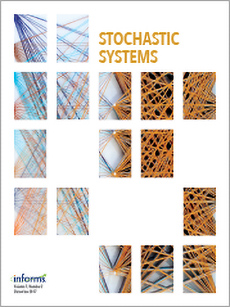Abstract
We study a fork-join network with a single class of jobs, which are forked into a fixed number of parallel tasks upon arrival to be processed at the corresponding multi-server stations. After service completion, each task will join a buffer associated with the service station waiting for synchronization, called “unsynchronized queue”. The synchronization rule requires that all tasks from the same job must be completed, referred to as “non-exchangeable synchronization”. Once synchronized, jobs will leave the system immediately. Service times of the parallel tasks of each job can be correlated and form a sequence of i.i.d. random vectors with a general continuous joint distribution function. We study the joint dynamics of the queueing and service processes at all stations and the associated unsynchronized queueing processes.
The main mathematical challenge lies in the “resequencing” of arrival orders after service completion at each station. As in Lu and Pang (2015) for the infinite-server fork-join network model, the dynamics of all the aforementioned processes can be represented via a multiparameter sequential empirical process driven by the service vectors for the parallel tasks of each job. We consider the system in the Halfin-Whitt regime, and prove a functional law of large number and a functional central limit theorem for queueing and synchronization processes. In this regime, although the delay for service at each station is asymptotically negligible, the delay for synchronization is of the same order as the service times.
Citation
Hongyuan Lu. Guodong Pang. "Heavy-traffic limits for a fork-join networkin the Halfin-Whitt regime." Stoch. Syst. 6 (2) 519 - 600, 2016. https://doi.org/10.1214/15-SSY206
Information





